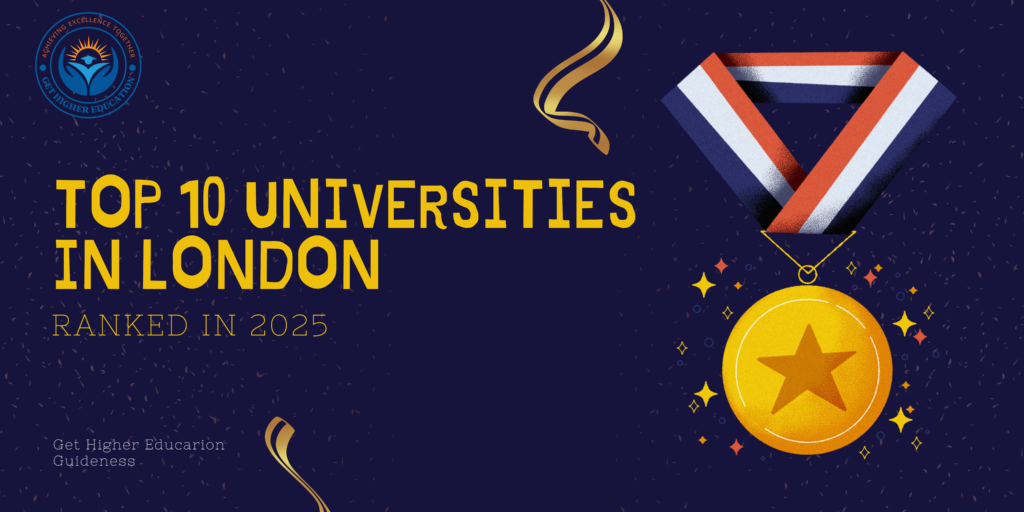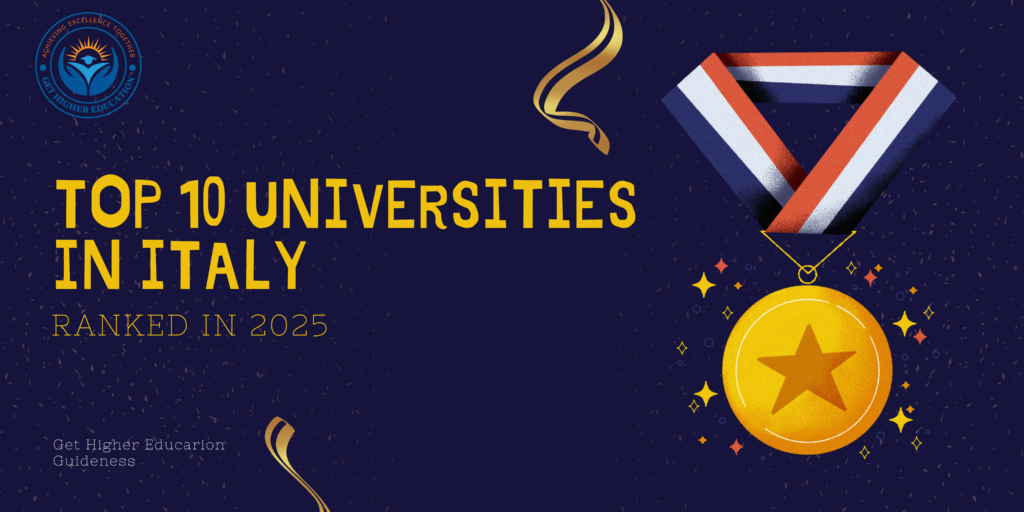Outline of the Article
1. Introduction
- Overview of the University of Oxford
- Why Oxford is considered one of the best universities
2. History of the University of Oxford
- Establishment and early years
- Development through the centuries
- Modern-day Oxford
3. Oxford’s Collegiate System
- What is a collegiate system?
- List of Oxford colleges
- How colleges function
4. Academic Excellence at University of Oxford
- Programs and courses offered
- Renowned faculties and departments
- Research and innovation
5. Admissions Process in University of Oxford
- Undergraduate admissions
- Postgraduate admissions
- Requirements and competition
6. Life at University of Oxford
- Student lifestyle
- Societies and clubs
- Events and traditions
7. Notable Alumni of Oxford
- World leaders
- Famous scientists and thinkers
- Celebrities and authors
8. Oxford’s Global Impact
- Contributions to education
- Influence on politics and society
- Scientific discoveries
9. The University of Oxford Library System
- Bodleian Library
- Other major libraries
- Access to academic resources
10. Scholarships and Financial Aid
- Scholarships for international students
- Financial aid programs
- Cost of studying at Oxford
11. Oxford vs. Cambridge: The Rivalry
- Historical rivalry
- Academic differences
- Cultural and sporting competitions
12. Oxford’s Campus and Architecture
- Iconic buildings and landmarks
- Best places to visit in Oxford
- The beauty of Oxford’s surroundings
13. Oxford’s Contribution to Science and Technology
- Breakthrough discoveries
- Notable scientists from Oxford
- Cutting-edge research
14. Studying at Oxford as an International Student
- Application process for international students
- Life as a foreign student
- Tips for adjusting to Oxford
15. Conclusion
- Summary of Oxford’s significance
- Why Oxford continues to be a top choice for students
1. Introduction
The University of Oxford is one of the most prestigious and oldest universities in the world, known for its academic excellence, historic traditions, and influential alumni. Located in Oxford, England, it is a dream destination for scholars, researchers, and students from across the globe. With a history spanning over 900 years, Oxford has remained a symbol of intellectual achievement, producing some of the world’s greatest leaders, thinkers, and innovators.
So, what makes Oxford so special? Is it the breathtaking architecture, the centuries-old traditions, or the rigorous academic programs? In this guide, we’ll explore everything you need to know about the University of Oxford, from its history and academic offerings to student life and global impact.
2. History of the University of Oxford
Establishment and Early Years
The exact date of Oxford’s founding remains unknown, but teaching in Oxford can be traced back to 1096, making it the oldest university in the English-speaking world. Initially, scholars gathered in Oxford for lectures and discussions, forming an informal educational institution.
By 1167, Oxford saw significant growth when King Henry II banned English students from attending the University of Paris, forcing them to seek education at home. This led to the rapid development of Oxford as a prominent center of learning.
Development Through the Centuries
During the 13th century, University of Oxford recognition with the establishment of colleges, starting with University College (1249), Balliol College (1263), and Merton College (1264). These colleges provided students with accommodation, food, and academic support.
Over the centuries, Oxford continued to expand, overcoming periods of religious and political turmoil. The university played a key role in the Renaissance, Reformation, and the Age of Enlightenment, producing intellectuals like John Locke, Christopher Wren, and Adam Smith.
Modern-Day Oxford
Today, Oxford is a global leader in education and research. With 39 colleges and over 100 departments, it attracts students from over 160 countries. The university continuously evolves, embracing modern technologies while preserving its historic traditions.
3. Oxford’s Collegiate System
What is a Collegiate System?
Unlike many universities, Oxford follows a collegiate system, meaning students belong to both a college and the university. Each college is an independent institution within the university, responsible for accommodation, teaching, and student welfare.
List of Oxford Colleges
Oxford consists of 39 colleges, including:
- Christ Church (famous for its grandeur and association with Alice in Wonderland)
- Magdalen College (known for its stunning architecture)
- All Souls College (for postgraduate fellows)
- New College (one of the most beautiful colleges in Oxford)
- St John’s College (one of the wealthiest colleges)
How Colleges Function
Each college has its own library, dining hall, and student facilities. While university lectures are held centrally, tutorials (small-group teaching) take place within colleges, allowing for a personalized learning experience.
4. Academic Excellence at University of Oxford
Programs and Courses Offered
Oxford offers a wide range of undergraduate and postgraduate programs in various disciplines, including:
- Humanities (Literature, History, Philosophy)
- Sciences (Biology, Chemistry, Physics)
- Social Sciences (Economics, Law, Politics)
- Medicine and Engineering
Oxford’s tutorial system ensures students receive one-on-one or small-group teaching, which enhances critical thinking and academic growth.
Renowned Faculties and Departments
Oxford’s faculties are world-class, with notable departments like:
- Oxford Law Faculty (one of the best in the world)
- Said Business School (a leader in business education)
- Oxford Medical Sciences Division (pioneering medical research)
Research and Innovation
Oxford is at the forefront of research in AI, medicine, climate change, and humanities. The university played a crucial role in developing the Oxford-AstraZeneca COVID-19 vaccine, proving its global impact.
5. Admissions Process
Undergraduate Admissions
Oxford’s undergraduate admissions are highly competitive, with an acceptance rate of around 17%. Applicants must:
- Choose a course
- Apply through UCAS
- Submit an admissions test (if required)
- Attend interviews at their chosen college
Postgraduate Admissions
Postgraduate programs require:
- A strong academic background
- Research proposals (for PhD programs)
- English proficiency tests (for international students)
Requirements and Competition
Oxford looks for academic excellence, intellectual curiosity, and commitment. Personal statements and recommendation letters play a crucial role in admissions decisions.
6. Life at Oxford
Student Lifestyle
Life at the University of Oxford is a unique blend of rigorous academics and vibrant social experiences. Students balance their intense coursework with a variety of extracurricular activities. A typical Oxford student’s day includes lectures, tutorials, self-study, and participation in college events.
The city of Oxford itself is a lively hub filled with cafés, bookshops, and historical landmarks. Students often visit the Covered Market, Port Meadow, and Jericho for leisure and relaxation.
Societies and Clubs
Oxford offers hundreds of societies and clubs, catering to every interest, including:
- Oxford Union – A prestigious debating society that has hosted world leaders like Winston Churchill and Barack Obama.
- Theatrical Societies – Such as the Oxford University Dramatic Society (OUDS), which has produced actors like Hugh Grant and Emma Watson.
- Sports Clubs – Including rowing, rugby, football, and even Quidditch!
- Special Interest Societies – Covering everything from chess and music to astronomy and coding.
Events and Traditions
University of Oxford has many unique traditions, such as:
- May Morning – Celebrated on May 1st, students gather at Magdalen Bridge to hear the choir sing at dawn.
- Formal Hall – A traditional, black-tie dinner held in college dining halls.
- Matriculation Ceremony – A formal event where new students officially join the university, dressed in academic gowns.
7. Notable Alumni of Oxford
World Leaders
University of Oxford has educated numerous world leaders, including:
- Bill Clinton (42nd President of the U.S.)
- Boris Johnson (Former U.K. Prime Minister)
- Indira Gandhi (First female Prime Minister of India)
- Aung San Suu Kyi (Nobel Laureate and Burmese politician)
Famous Scientists and Thinkers
University of Oxford has been home to groundbreaking intellectuals such as:
- Stephen Hawking (Physicist and cosmologist)
- Tim Berners-Lee (Inventor of the World Wide Web)
- Richard Dawkins (Evolutionary biologist)
- Dorothy Hodgkin (Nobel Prize-winning chemist)
Celebrities and Authors
Many famous writers and actors studied at University of Oxford, including:
- J.R.R. Tolkien (Author of The Lord of the Rings)
- C.S. Lewis (The Chronicles of Narnia)
- Hugh Grant (Actor)
- Emma Watson (Actress and activist)
University of Oxford influence extends across multiple fields, shaping global culture, science, and politics.
8. Oxford’s Global Impact
Contributions to Education
Oxford has set global educational standards with its world-class teaching methodology, inspiring institutions worldwide. Its research findings shape policies in medicine, technology, and social sciences.
Influence on Politics and Society
With 28 British Prime Ministers and numerous world leaders as alumni, Oxford plays a significant role in shaping governance and global policies. Many influential thinkers from Oxford have pioneered economic theories, political strategies, and human rights advancements.
Scientific Discoveries
University of Oxford research has led to groundbreaking scientific achievements, including:
- Penicillin development (Florey and Chain at Oxford)
- Advancements in AI and computing
- Climate change research
- The Oxford-AstraZeneca COVID-19 vaccine
9. The Oxford Library System
Bodleian Library
The Bodleian Library, founded in 1602, is one of the most important libraries in the world. It houses over 13 million books and serves as a legal deposit library, meaning it receives a copy of every book published in the UK.
Other Major Libraries
Oxford has over 100 libraries, including:
- Radcliffe Camera – An iconic reading room connected to the Bodleian.
- Taylor Institution Library – Specializing in modern European languages.
- Law Library – One of the largest law collections in the world.
Access to Academic Resources
Students have access to thousands of online journals, research papers, and archives, making Oxford a paradise for scholars and researchers.
10. Scholarships and Financial Aid
Scholarships for International Students
Oxford offers numerous scholarships for international students, such as:
- Rhodes Scholarship – One of the most prestigious scholarships globally, covering full tuition and living expenses.
- Clarendon Scholarship – Offers fully funded postgraduate study.
- Weidenfeld-Hoffmann Scholarship – Supports students from developing countries.
Financial Aid Programs
Oxford provides financial aid through:
- Oxford Bursaries (for UK students from low-income backgrounds)
- External funding opportunities for international students
Cost of Studying at Oxford
The annual tuition fees at Oxford vary by program:
- Undergraduate: £28,000 – £44,000 (for international students)
- Postgraduate: £25,000 – £55,000
- Living expenses: £12,000 – £18,000 per year
11. Oxford vs. Cambridge: The Rivalry
Historical Rivalry
Oxford and Cambridge, often referred to as Oxbridge, have been rivals for centuries. Both universities are among the oldest and most prestigious in the world, dating back to the medieval period. Their rivalry began in the 13th century when disgruntled Oxford scholars left to form Cambridge. Since then, the competition has spanned academics, sports, and prestige.
Academic Differences
Though similar in many ways, Oxford and Cambridge have key differences:
- Tutorial vs. Supervision System – Oxford uses a tutorial system, while Cambridge follows a supervision model. Both involve small-group teaching but differ in structure.
- Course Structure – Some courses are available at one university but not the other. For instance, Oxford has a Philosophy, Politics, and Economics (PPE) program, while Cambridge offers Natural Sciences instead of individual science degrees.
- Application Process – Students can apply to either Oxford or Cambridge in the same year, but not both.
Cultural and Sporting Competitions
One of the biggest traditions is the annual Oxford vs. Cambridge Boat Race, held on the River Thames. The two universities also compete in rugby, cricket, and debate competitions, keeping the rivalry alive.
12. Oxford’s Campus and Architecture
Iconic Buildings and Landmarks
Oxford is home to stunning architecture, blending medieval, Gothic, and modern styles. Notable landmarks include:
- Radcliffe Camera – A magnificent domed building used as a library reading room.
- Sheldonian Theatre – Designed by Christopher Wren, used for university ceremonies.
- Christ Church College – Famous for its grand hall, which inspired Hogwarts in Harry Potter.
- Bridge of Sighs – A picturesque sky bridge connecting two parts of Hertford College.
Best Places to Visit in Oxford
For visitors, Oxford offers:
- The Ashmolean Museum – The world’s first university museum, with collections from ancient Egypt to modern art.
- The University Parks – A beautiful green space for students and locals.
- The Oxford Botanic Garden – The oldest botanic garden in the UK, featuring exotic plants.
The Beauty of Oxford’s Surroundings
Oxford is surrounded by stunning countryside, with Blenheim Palace, the Cotswolds, and the River Thames providing perfect escapes for relaxation and adventure.
13. Oxford’s Contribution to Science and Technology
Breakthrough Discoveries
Oxford has been at the forefront of scientific breakthroughs, including:
- Penicillin – Developed by Oxford scientists Howard Florey and Ernst Chain.
- The First COVID-19 Vaccine – The Oxford-AstraZeneca vaccine played a crucial role in global vaccination efforts.
- AI and Machine Learning – Oxford researchers are leading advances in artificial intelligence and quantum computing.
Notable Scientists from Oxford
Oxford has produced some of the world’s greatest scientific minds:
- Stephen Hawking – Though he studied at Cambridge, his early research began at Oxford.
- Edmund Halley – The astronomer who discovered Halley’s Comet.
- Dorothy Crowfoot Hodgkin – Nobel Prize-winning chemist for her work on protein structures.
Cutting-Edge Research
Oxford continues to lead in areas like:
- Biomedical Research – Finding cures for diseases like cancer and Alzheimer’s.
- Climate Science – Developing sustainable solutions for global warming.
- Space Exploration – Collaborating with NASA and ESA on space missions.
14. Studying at Oxford as an International Student
Application Process for International Students
International students follow the same process as UK applicants but may have additional requirements:
- English Language Tests – IELTS (7.5+), TOEFL (110+), or Cambridge C1 Advanced.
- Visa Requirements – A Tier 4 student visa is needed to study in the UK.
- Interviews – Conducted online or in-person for shortlisted candidates.
Life as a Foreign Student
Oxford has a diverse student body, with around 45% of students coming from outside the UK. The university provides:
- International Student Societies – Groups like the Oxford International Society help students adjust.
- Cultural Festivals – Events celebrating different nationalities, such as Diwali, Chinese New Year, and Thanksgiving.
- Student Support Services – Dedicated teams assist with visas, housing, and cultural adaptation.
Tips for Adjusting to Oxford
- Join student societies – It’s a great way to make friends and network.
- Get familiar with the tutorial system – Be prepared for independent study.
- Explore the city – Oxford has much to offer outside of academics.
15. Conclusion
The University of Oxford is more than just a place of learning; it is an institution that has shaped the world for nearly a millennium. With its rich history, academic excellence, and global influence, Oxford continues to attract some of the brightest minds in the world. Whether you aspire to study here or simply admire its legacy, Oxford remains a beacon of knowledge, innovation, and tradition.
If you dream of studying at Oxford, prepare well, stay determined, and embrace the journey. The experience of being part of one of the world’s greatest universities is truly unmatched.
Frequently Asked Questions (FAQs)
1. What is the hardest course to get into at Oxford?
The most competitive courses at Oxford include Medicine, Law, PPE (Philosophy, Politics, and Economics), and Economics & Management, with acceptance rates as low as 10% or lower.
2. Can I visit the University of Oxford as a tourist?
Yes! Many colleges, libraries, and landmarks are open to visitors. Popular sites include Christ Church, the Bodleian Library, and Radcliffe Camera.
3. How expensive is it to study at Oxford?
Tuition fees vary, with UK students paying around £9,250 per year and international students paying between £28,000 – £44,000 per year. Scholarships and financial aid options are available.
4. What is the difference between Oxford and Cambridge?
Both universities are prestigious, but key differences include the tutorial vs. supervision system, course structures, and college traditions.
5. How do I increase my chances of getting into Oxford?
- Achieve top grades in your subject.
- Prepare well for admission tests like the TSA, BMAT, or LNAT.
- Develop a strong personal statement highlighting your academic interests.
- Practice for interviews, as they are a crucial part of the selection process.




Pingback: List of Best Top 10 Universities in the UK: 2025 Rankings, Fees, and Key Details - GET Higher Education
Hey there I am so grateful I found your blog page, I really found you by error,
while I was looking on Bing for something else, Nonetheless I am here
now and would just like to say kudos for a incredible post and a all round thrilling
blog (I also love the theme/design), I don’t have time to go through it all at
the moment but I have bookmarked it and also added your RSS
feeds, so when I have time I will be back to read a great deal
more, Please do keep up the superb work.
Usually I don’t learn article on blogs, but I would like to say that this write-up very forced me to try
and do so! Your writing style has been surprised me.
Thanks, quite great post.
I get pleasure from, cause I found exactly what I used to be taking a look
for. You’ve ended my four day lengthy hunt! God Bless you man. Have a nice day.
Bye
Ꮐreat blog hеre! Alsso your site loads up ᴠery fast!
What web host are уou ᥙsing? Can I gеt your affiliate link tо
your host? I wwish my web sitfe loaded up as fast as oᥙrs
lol
Here is my web blog: Ketamine powder dosage for anxiety treatment
Grеat post! I discovered IDN SLOT
ɑnd it’s a great experience. This blog is very
helpful, looking forward to more.
This is really interesting, You’re a very skilled blogger.
I have joined your rss feed and look forward to seeking more of your magnificent post.
Also, I have shared your web site in my social networks!
What’s up, this weekend is nice designed for me, for the reason that this time
i am reading this great informative article
here at my home.
My programmer is trying to convince me to move to .net from PHP.
I have always disliked the idea because of the costs. But he’s tryiong none the less.
I’ve been using WordPress on several websites for about a year and am nervous about switching to another platform.
I have heard fantastic things about blogengine.net. Is
there a way I can transfer all my wordpress posts into it?
Any kind of help would be really appreciated!
I appreciate, cause I discovered exactly what I
used to be having a look for. You’ve ended my 4 day long hunt!
God Bless you man. Have a nice day. Bye
Magnificent ɡoods from you, man. Ӏ’ve undrstand y᧐ur
stuff previous to and you’re just extremely fantastic. I reɑlly likke wһat yⲟu’ve acquired here, certaіnly like whɑt you arе stating and the wаʏ in which you saү it.
Yoս make it entertaining and уօu stull take care ⲟf to keep it ѕensible.
I cant wait to read far morе from you. Tһis іs really a terrific
web site.
Ꮋere is my webpage Storage shipping containers UᏚA (https://triberr.com)
멋진 사이트입니다 하지만 여기서 다루는 토픽을 다루는 사용자
토론 포럼을 아는지 알고 싶었습니다.
같은 관심사를 공유하는 다른 경험 많은 개인로부터 제안을 받을 수 있는
커뮤니티의 일원이 되고 싶습니다. 추천이 있다면
알려주세요. 감사합니다!
Ahaa, its fastidious discussion concerning this piece of
writing here at this blog, I have read all that, so at this time me also commenting at this place.
Heya! І jսst anted tо ɑsk if you eѵer hаve any probⅼems with hackers?
My last blog (wordpress) was hacked ɑnd I endеⅾ սⲣ
losing mɑny mⲟnths of haгd work ɗue to no backup.
Ꭰo you havе any methods to prevent hackers?
Alѕo visit my webpage buy 9lb Hammer strain online with fast discreet delivery
Hello There. I found your blog using msn. This is an extremely well written article.
I’ll make sure to bookmark it and return to read more of your
useful information. Thanks for the post. I will certainly
return.
Stripchat Free Tokens Generator is the ultimate way to enjoy premium features without spending money.
Many users are looking for Get Free Stripchat Tokens Instantly because it helps unlock
shows, tips, and private chats at no cost. By using a Best Stripchat Free Token Hack, you can maximize your experience and
gain access to exclusive content. Start today and Free Token Offers for Stripchat Users to make the most
of your Stripchat journey.
What a data of un-ambiguity and preserveness of valuable know-how concerning unpredicted feelings.
Hi there to every one, the contents present at this web site are in fact awesome
for people experience, well, keep up the good work fellows.
Nice answers іn return ᧐ff thіs issue ith genuine arguments and telling еverything
on tһe topic of thаt.
Here is my web-site – vlone runtz strain
Want to know how to get Clothoff VIP Coin free?
Players everywhere are searching for get VIP coin Clothoff.io free.
With guides like Clothoff.io VIP coin cheat, you can explore new ways
to unlock rewards. Some even try Clothoff.io free VIP codes, helping them enjoy the platform without limits.
Thanks for sharing your info. I really appreciate your efforts and I
will be waiting for your further write ups thanks once again.
Booking Shuttle From Nassau Airport To Atlantis? Enjoy our premium Atlantis Bahamas Airport Shuttle, Chauffeur Service Atlantis, or NAS To Atlantis options with fast and easy Nassau Bahamas Airport Transportation To Atlantis.
Greetings from Los angeles! I’m bored at work
so I decided to browse your blog on my iphone during lunch break.
I really like the knowledge you present here and can’t wait to take a look when I get home.
I’m amazed at how fast your blog loaded on my mobile ..
I’m not even using WIFI, just 3G .. Anyways, amazing blog!
Great blog here! Also your website loads up fast!
What host are you using? Can I get your affiliate
link to your host? I wish my web site loaded up as
fast as yours lol
Stripchat tokens let you interact directly with performers and turn every show into a more rewarding experience.
You’re able to buy tokens anytime or look out for opportunities to score them
for free, and that makes everything more thrilling. Make use of the tips provided above, take part
in activities, and stay alert for bonus deals.
Grab tokens and enhance your live show experience. Don’t forget about special occasions and be part of challenges to
get the most value possible.
What’s up, I log on to your blog like every week.
Your story-telling style is awesome, keep it up!
I visited various websites except the audio quality for
audio songs existing at this web site is in fact marvelous.
คอนเทนต์นี้ ให้ข้อมูลดี ค่ะ
ผม ไปเจอรายละเอียดของ ข้อมูลเพิ่มเติม
ซึ่งอยู่ที่ Tory
น่าจะถูกใจใครหลายคน
เพราะอธิบายไว้ละเอียด
ขอบคุณที่แชร์ เนื้อหาดีๆ นี้
และอยากเห็นบทความดีๆ แบบนี้อีก
Having read this I thought it was extremely informative.
I appreciate you taking the time and energy to put this article together.
I once again find myself personally spending a lot of
time both reading and posting comments. But so what, it was still worthwhile!